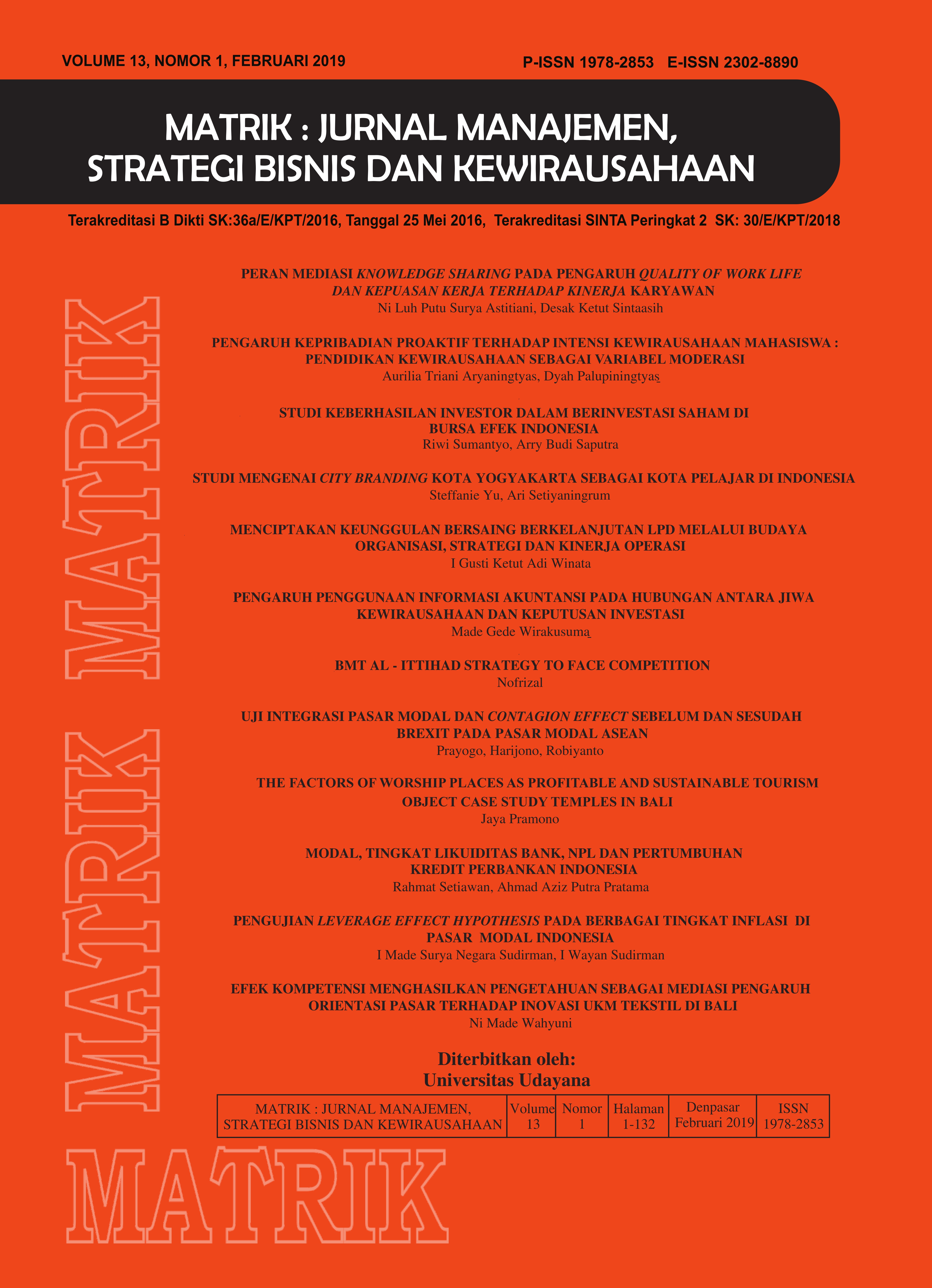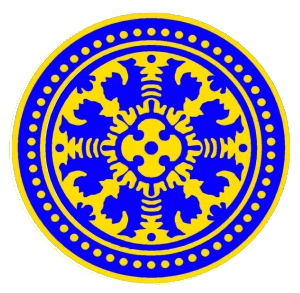THE FACTORS OF WORSHIP PLACES AS PROFITABLE AND SUSTAINABLE TOURISM OBJECT CASE STUDY TEMPLES IN BALI
Abstract
Research publications on management of places of worship (POW) as profitable and sustainable tourism objects are very rare in Indonesia. This research was inspired by the high number of tourists who visited the POW such as Pura Tanah Lot, Pura Ulundanu and Pura Uluwatu. These Pura (temples) are always in the top ten tourism objects in Bali, based on the number of tourists visiting. The high number of tourists visiting the POW have an impact on the welfare of the communities around the object, the environmental conditions, and the sustainability of the object. This article aims to determine the main factors which result in a profitable and sustainable POW. The respondents are the tourists who visit the POW of Tanah Lot Temple, Ulundanu Temple and Uluwatu Temple. This research used observations, interviews, questionnaires, and documentation to collect data and the descriptive statistics and factor analysis to analyze the data. The results of this research indicate that there are four (4) main factors that shape the success of the POW as profitable and sustainable tourism objects. The four main factors are: Factors of Amenities, which consist of: parking area, public market/shopping area for souvenirs, accommodation (hotel), restaurant, rest room/public toilet, ticket booth, ticket check point, information center and cleanliness of the POW. Factors of Attraction, which consist of: main attractions (uniqueness), panorama and natural beauty, cultural attractions, and traditional handicraft. Factors of Ancillary/tourism organization, which consists of: the organization of POW, professional tourism organization and money changer. The last factor is Factors of Accessibility which consists of: access to the POW, transportation traffic to the POW, location of POW, and the information of the POW as the tourism object. The recommendation from this research is if the POW want to be a profitable and sustainable tourism object, these four factors should be considered as strong recommendations to implement.
Keyword: Profitable, sustainable, POW and tourism object.
Downloads
References
Badrika, I Wayan. 2000. Kegiatan pariwisata di pura Tanah Lot: studi kasus tentang peranan desa adat Beraban dalam Mengelola obyek wisata pura Tanah Lot. Universitas Indonesia. Fakultas Ilmu Sosial dan Politik. Program Studi Antropologi. http://lontar.ui.ac.id/opac/ui/detail.jsp?id=70946&lokasi=lokal
Burkrat dan Medlik. 2007. Tourism, Alih bahasa Robert Siagian. Jakarta: Profesional Publishing.
Correia, Antonia & Geoffrey I. Crouch. 2004. A Study of Decision Processes: Algarve, Portugal ; Faculty of Economic. University of Algarve & School of Business. La Trobe University.
Ferdinand, Augusty, 2006, Structural Equation Modeling Dalam Penelitian Manajemen, Badan Penerbit Universitas Diponegoro.
Kartajaya, Hermawan. 2004. Hermawan Kartajaya on brand Seri 9 Elemen Marketing. PT Mizan Pustaka, Bandung
Maryani, E., dkk. 1991. Ilmu Pariwisata (Sebuah Pengantar Perdana). Jakarta: PT. Pradnya Paramit
Rai Utama, I Gusti Bagus. 2014. Kontradiksi Pengelolaan Objek Wisata Berbasis Budaya Dan Warisannya. Mahasiswa Program S3 Pariwisata Universitas Udayana. Denpasar. Bali
Santoso, Singgih. 2001. Riset Pemasaran. PT Elex Media Komputindo Kelompok Gramedia, Jakarta.
Undang-Undang Republik Indonesia. Nomor 10. Tahun 2009. Tentang Kepariwisataan. http://www.budpar.go.id/userfiles/file/4636_1364-UUTentangKepariwisataannet1.pdf. 16 Januari 2009.
Yamin, S. dan Kurniawan, H., 2009, Structural Equation Modeling: Belajar Lebih Mudah Teknik Analisis Data Kuesioner dengan LISREL-PLS, Buku Seri Kedua, Jakarta: Salemba Infotek.
 This work is licensed under a Creative Commons Attribution-ShareAlike 4.0 International License.
This work is licensed under a Creative Commons Attribution-ShareAlike 4.0 International License.

















